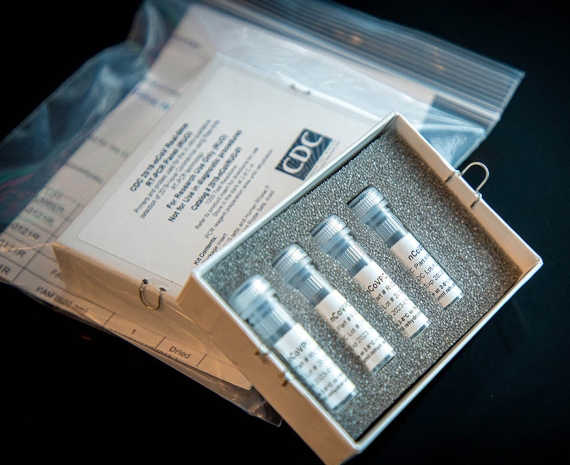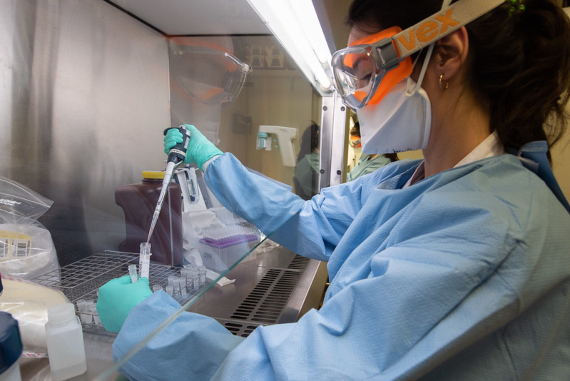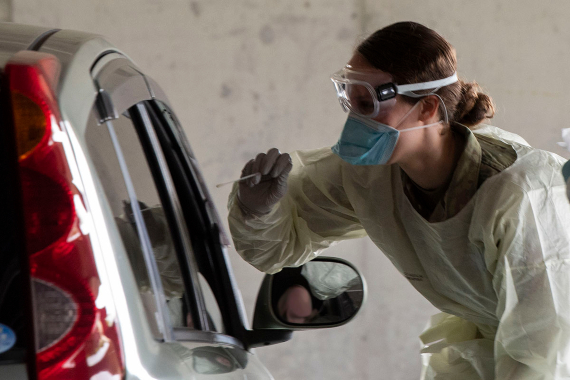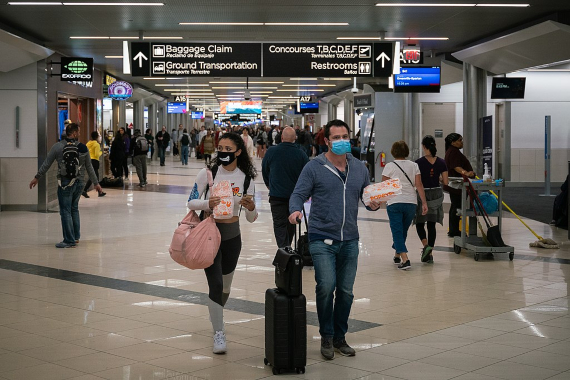The countries most affected by the first wave of the pandemic have put in place their plans to lift the confinement measures, having succeeded in slowing the rate of contagion. The common denominator of all these plans to reopen workplaces —perform many more tests— clashes with the global shortage of equipment and materials needed to diagnose COVID-19. So far, few countries have reached the level of testing recommended by experts; among them, Germany, South Korea and Iceland are three cautious success stories. It is clear that we need better, faster and cheaper diagnostic tests, and the race to develop them is well underway, involving research teams and companies across the globe.

Faced with this testing shortage, some countries have turned to serological testing to detect coronavirus infections. But these rapid (and cheaper and easier to perform) blood tests have the problem that they have been designed for another purpose: to find out if a person was infected in the past. They detect whether someone’s immune system has generated antibodies to fight the virus, but little else. They don’t show who is infectious now (at the time of testing) or what level of immunity, if any, they may have. Their main usefulness is to determine the extent to which the virus has penetrated a population.
But if the goal is to detect and halt the spread of the coronavirus, diagnostic tests are what is needed. These look for the active presence of the coronavirus in the person’s respiratory system, and thus determine who is currently infected and must be isolated. The gold standard diagnostic test is based on the PCR (polymerase chain reaction) technique, a laborious procedure that amplifies the genome of the virus after its RNA has been carefully extracted.
Logistical problems
Logistics is the biggest obstacle to scaling up diagnostic testing. Countries and even regions within countries are competing for a limited supply of key items such as nasal swabs, equipment or chemicals to perform PCR, which are scarce and expensive. Although PCR is a robust and well-established technique used for decades, it requires specialized professionals and expensive equipment, creating bottlenecks in the limited number of laboratories that carry out the analyses. Fortunately, solutions are emerging. In the USA, the FDA has given the green light to new nasal swabs, which make sampling easier, and a shift to saliva analysis is being considered, which would eliminate the need for swabs and could provide better results.

While automation, the elimination of unnecessary steps and the use of more efficient procedures are helping laboratories to speed up PCR testing, this procedure alone will not be sufficient to meet the massive and growing demand worldwide, and the need to communicate results quickly.
Employing a variety of testing methods
According to an Israeli study, COVID-19 tests could be performed more easily and cheaply using Loop-mediated Isothermal Amplification (LAMP), which works at a temperature of about 60°C (a major advantage over PCR), is performed in a single tube and can provide easy-to-read results in about 30 minutes, allowing for on-site testing and interpretation with few technicians. Another recent paper suggests that LAMP testing “can be affordably scaled up to analyse millions of samples per day, using existing sequencing infrastructure.”
CRISPR gene editing technology provides another alternative for detecting coronavirus, cheaper and faster than PCR and with different chemical reagents, commercially available in the market, which would relieve pressure on stressed supply chains. Although this procedure is still under study, it is likely that CRISPR-based tests will be launched in the future as a complement to PCR tests.
Rapid antigen testing
Antigen tests, cheaper and simpler than PCR tests, look for the spikey protein fragments that stud the surface of the virus as a marker of infection. These tests, which already exist for flu and strep throat, are quick (10-30 minutes), require no special chemical reagents or nasal swabs —they use saliva samples— and work similarly to a home pregnancy test.

The problem lies in their being less sensitive than laboratory tests, as they tend to miss about 15% to 20% of infections. Although some rapid antigen tests comply with relevant European Union legislation, their availability on the market is limited at the moment. The British laboratory Mologic is working with scientists in Senegal to develop an antigen test for COVID-19 that is affordable on the global market.
At-Home diagnostic tests
Ultimately, providing the public with a simple, fast, accurate and inexpensive diagnostic test for the coronavirus in their homes will be key to stopping the spread of the virus and reducing fear. At-home test kits are already available in the US, but while samples are collected at home, they must be mailed to a laboratory for testing.
While the at-home version of serological (antibody) tests for COVID-19 will likely be available first, at-home diagnostic test kits that provide a result in just minutes should eventually arrive as well. These will most likely be saliva tests that detect SARS-CoV-2 antigens, quickly letting users know if they have the novel coronavirus in their body.
Given the huge demand for these tests, companies are scrambling to get them approved and bring them to market. Researchers in Colorado (USA) are currently testing the SickStick, which would allow biomarkers of infected cells to be detected using saliva and a test strip.
Innovative detection methods
Other state-of-the-art techniques may soon screen people for COVID-19 in places such as airports, shops, hospitals and border crossings, where even 10-15 minutes is too long to wait for a test result. The Israeli startup NanoScent is testing a chip designed to identify people infected with the virus through a nasal breath test and give a result in 30 seconds. In addition to symptoms such as fever, viruses alter the scent of our breath and body. Other studies —underway in France, the UK and the US— are exploring the possibility of training dogs to detect infected people through their body odour.

The Wadhwani Institute of Artificial Intelligence is applying a sound-based detection strategy, using AI and a large database of donated cough recordings to try to detect the first signs of COVID-19 in the sound of a person’s cough. In Switzerland, other AI researchers are building an app that they hope will let users know if they have contracted the coronavirus, simply by coughing into their smartphone. Could there even be a pattern in the breathing and heart rate of those infected that would allow them to be identified by their smart watches? Stanford University has just launched a large-scale study to find out.
Comments on this publication